
Back to Blogs
Discover
American Connections
From Bartholomew Gosnold, who founded Jamestown in Virginia, the American ancestors of the Barons of the Magna Carta to the thousands of GIs welcomed to this part of Suffolk. The Bury St Edmunds area shares many historical links with our American friends.
Godspeed - Bury St Edmunds Links to Jamestown, Cape Cod and Martha’s Vineyard

Bartholomew Gosnold (photo courtesy of Preservation Virginia) and The Godspeed by Jonathan Clarke and
Bury St Edmunds explorer and lawyer Bartholomew Gosnold founded the first permanent English settlement in America, Jamestown, in 1607.
Visitors to Bury St Edmunds can see a permanent reminder of Gosnold’s adventures in the Refectory garden of St Edmundsbury Cathedral. A beautifully modern piece of art which depicts Gosnold’s ship, the Godspeed, by artist Jonathan Clarke.
Bartholomew made his first voyage to the New World in 1602, and it was on this voyage that he named Cape Cod. Further south he found a single small island which, in memory of his little daughter who died in Bury St Edmunds before the age of 2, he named Martha’s Vineyard. As Martha was baptised at St James’ Church (now St Edmundsbury Cathedral) in 1597 it is thought that she is buried in the Great Churchyard, although there is no marked grave. His son Robert, Susan, Bartholomew, Paul, and another Martha were all baptised at St James' Church.
On his second journey to the New World, Bartholomew named the proposed settlement Jamestown in honour of the king on May 13 1607, he died just 4 months later.
Bartholomew Gosnold is considered by Preservation Virginia to be the "prime mover of the colonization of Virginia".
Read more on our Bartholomew Gosnold blog.
American Magna Carta Ancestry and Bury St Edmunds
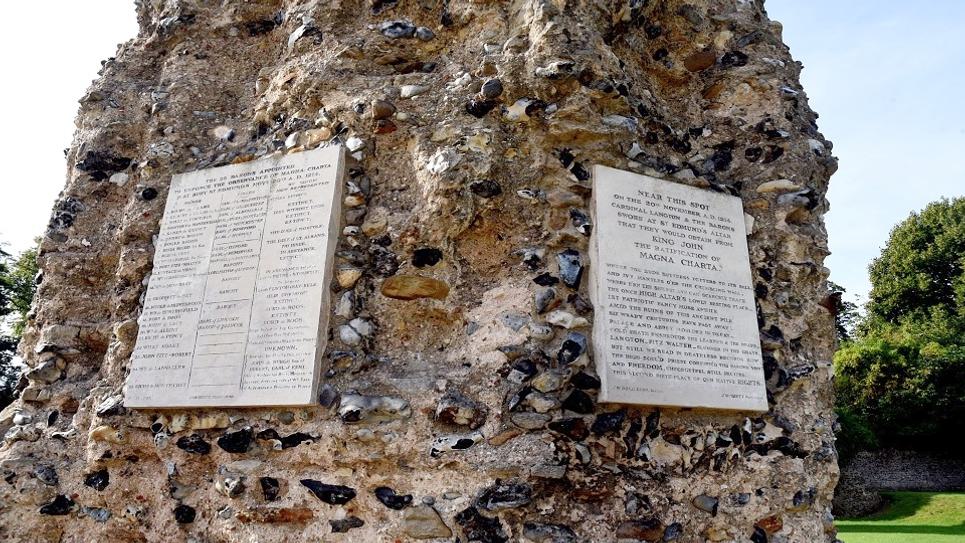
Bury St Edmunds has a pivotal role in the history of the Magna Carta, a charter of liberties on which the American Constitution is based, and American families can often be found in the town to trace their ancestry back to the Barons who made it all happen.
In November 1214, 26 barons had met secretly at Bury St Edmunds Abbey, and swore an oath to compel King John to accept The Charter of Liberties, a proclamation of Henry I. It was the direct precursor to Magna Carta a year later.
The US-based National Society Magna Charta Dames, who can trace their ancestry back to the original barons, donated the Shields of the Barons carved around the walls of the quire and sanctuary at St Edmundsbury Cathedral which you can see today.
The Winthrops

Portrait of Massachusetts Bay Colony Governor John Winthrop. It was held in the Winthrop family until the 19th century, when it was donated to the American Antiquarian Society.
John Winthrop was an English Puritan lawyer, educated in Bury St Edmunds, and one of the leading figures in founding the Massachusetts Bay Colony, the second major settlement in New England, following Plymouth Colony.
His son, also John Winthrop, was the chief founder of Agawam, now Ipswich, Massachusetts, in 1633. Educated at Bury St Edmunds Grammar School now King Edward VI School in Bury St Edmunds, in 1631, he followed his father to Massachusetts Bay and was one of the "assistants" of the Massachusetts Bay Colony.
He became one of the magistrates of the Connecticut Colony in 1651, was governor of the colony in 1657–1658, and again became governor in 1659, being annually re-elected until his death. During his time as Governor of Connecticut, he oversaw the acceptance of Quakers who were banned from Massachusetts. Besides being Governor of Connecticut, he was also one of the commissioners of the United Colonies of New England in 1675.
The Friendly Invasion

The United States 8th Army Air Force (USAAF) arrived in Suffolk in 1942, known as ‘The Mighty Eighth’.
Between then and 1945 there were thousands of USAAF personnel stationed in Suffolk. They included bomber and fighter groups. The impact of this 'Friendly Invasion' was enormous and has left many lasting links between our two countries.
Rougham Control Tower Aviation Museum is dedicated to the American Airmen/women who served in the 322nd Bomb Group and the 94th Bomb Group of the ‘The Mighty Eighth’ during WWII.
This was the home of 322nd Bomb Group flying the B-26 Marauder before the 322nd left for Earls Colne in June 1943, exchanging bases with the 94th Bomb Group flying the B-17. Today the control tower stands as a memorial to all those who flew from Rougham, and houses a museum containing a number of artefacts and stories of those who flew from the base, including Brigadier General Frederick W Castle who won the Congressional Medal of honor for his actions on Christmas Eve 1944.
Just 3 miles from Bury St Edmunds, the museum is open every Sunday from April to October. Free entry. Visit Rougham Control Tower Aviation Museum's website for more information. Visit our Masters of the Air Guide for more information.
Bury St Edmunds Guildhall
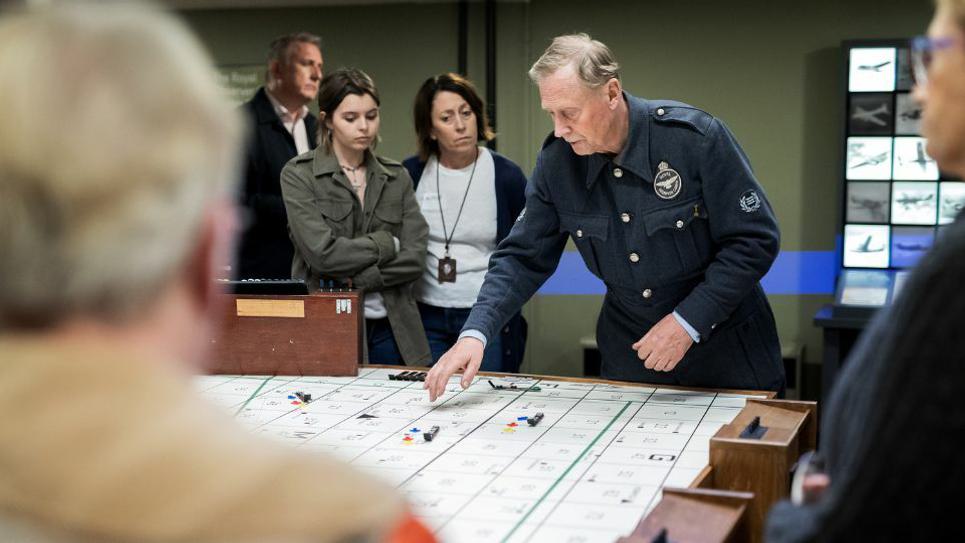
Bury St Edmunds Guildhall
Located within Bury St Edmunds Guildhall is a former Royal Observer Corps (ROC) WWII wartime Operations Room from 1939, converted from the old 1806 Council Chamber – the only surviving room of its kind in the country.
It was from this room throughout World War II that the air defence of Suffolk was coordinated with the RAF and the USAAF crews.
Of the forty such Operations Rooms that were constructed this is the only example which survives structurally intact. Due to the fact that its closure as an operational centre happened to coincide with the original listing process, the fabric of the Operations Room has been left largely as it was the day the last operational commander left the building. It was manned and operated mostly by civilians drawn from the local population.
It is regarded as a nationally important historic site in its own right, but it also holds a treasured place in local memory with some surviving operators and many family members keenly interested in its future.
RAF Lavenham
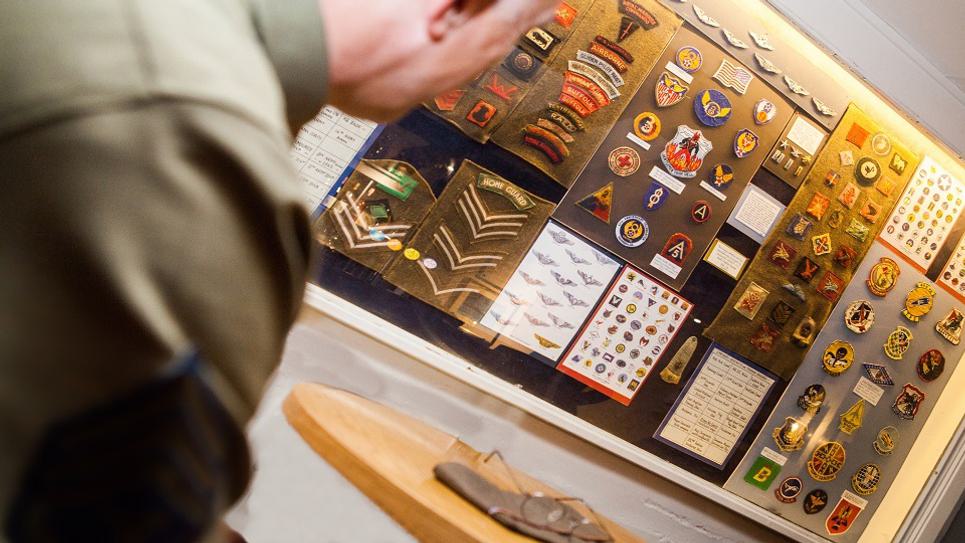
The Airmen's Bar
RAF Lavenham was the home of the 487th Bombardment Group. The 487th flew 185 missions and more than 6,000 sorties whilst stationed at Lavenham during the Second World War.
Many US airmen congregated in the 15th Century pub The Swan. Now part of The Swan at Lavenham Hotel and Spa, it is called The Airmen’s Bar, in honour of the many servicemen from RAF Lavenham and beyond who would come to relax, drink and socialise. A wonderful collection of signatures of the US servicemen who drank there has been lovingly preserved and mementos adorn the walls turning it into a living piece of history.
You could always have a go at the Boot Record, a challenge to drink three and a half pints of ale from a glass boot in record time and don’t forget to try the 487th Commemorative Beer.
Technical Sergeant John T Appleby's Rose Garden
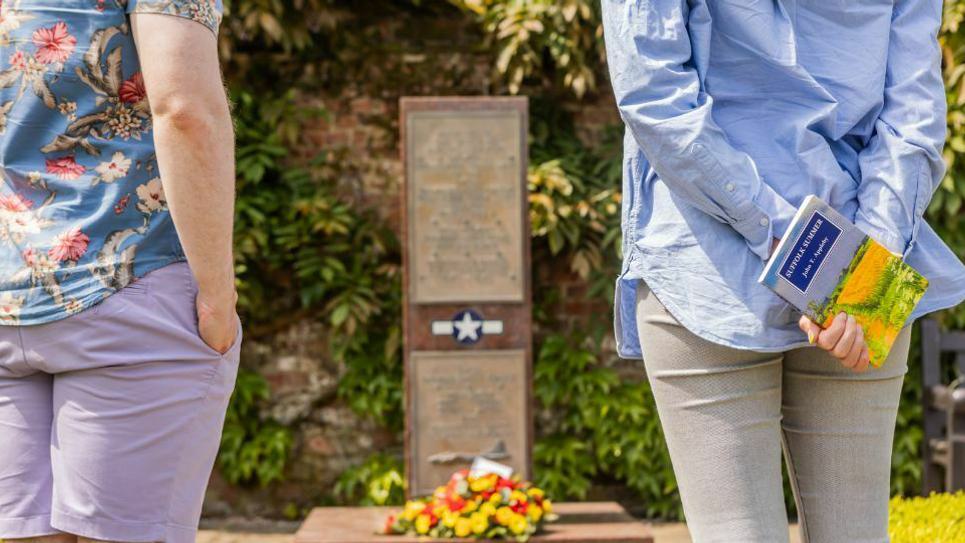
The Appleby Rose Garden in the Abbey Gardens
An American Technical Sergeant named John T Appleby served with the 487th Bomb Group in Lavenham, for just the last six months of the war. But it was long enough for him to fall in love with Suffolk.
He wrote a book called Suffolk Summer and donated his royalties to fund The Abbey Gardens Rose Garden as a lasting memorial to the brave young men who lost their lives so far from their homeland.
Originally an orchard, the garden has over 400 rose bushes and a very unique feature is a beautiful bench made from the wing of an American 'Flying Fortress Bomber'.

B17 Flying Fortress Bench in The Appleby Rose Garden in the Abbey Gardens
Rattlesden and the 447th Bombardment Group
The 447th Bombardment Group were based in Rattlesden, 12 miles from Bury St Edmunds.
At St Nicholas’ Church in Rattlesden you can find a memorial recognising the servicemen’s courage, determination and skill under stress of combat and dedicated to Squadrons 708,709, 710, 711 of the 447th Bombardment Group, 3rd division, 4th combat wing, Eighth Air Force.
Related Blogs
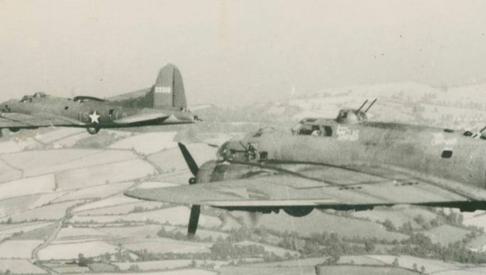

How a Bury St Edmunds Air Base Made History
Bury St Edmunds was home for thousands of American…
View More
A Suffolk Summer - The Book Written in WWII…
American Serviceman John Appleby's book A Suffolk…
View More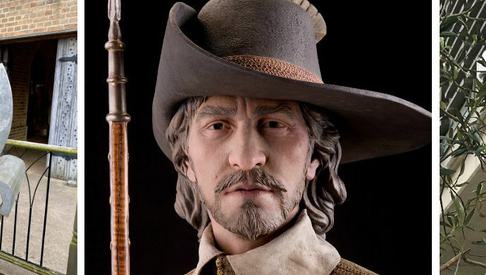

Untold Stories of Masters of the Air:…
The extraordinary stories of the Americans who came to…
View More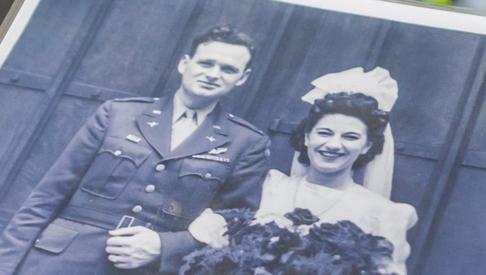
Untold Stories of Masters of The Air: Edith…
How Local Girl Edith Married Handsome American GI Tom
View More
Bury St Edmunds Role in the Magna Carta
The Magna Carta is widely recognised as one of the…
View More
Related Blogs

News
Tours Take Off for Masters of…
Tours developed by Bury St Edmunds Tour Guides and…

News
Vote for Bury St Edmunds Tour…
Vote now to Help Bury St Edmunds Tour Guides win the…

News
See Rendlesham Revealed at…
1,400-year-old Anglo-Saxon artefacts from National…

News
New afternoon tea at Lavenham…
Enjoy a Masters of the Air themed afternoon tea at The…

News
Itinerary: Masters of the Air
Follow in the footsteps of the Master of the Air
Latest news

News
Discover Suffolk's County Flower - the Oxlip
Did you know that Suffolk has a county flower? The Oxlip only grows in some woodland areas of Suffolk, Cambridgeshire and Essex.

News
Quentin Blake ‘The Illustrated Hospital’ exhibition at Bury St Edmunds Museum
A summer exhibition of illustrations by Quentin Blake at Moyse’s Hall Museum, Bury St Edmunds presents a rare opportunity to view a large collection of pieces by one of the nation’s favourite artists.

News
Abbey Project Awarded National Lottery Heritage Fund Grant
The project aims to conserve and protect the ruins; build a visitor centre, west cloister, and network of footpaths; and use digital technology to provide exciting interpretation for all ages and…

News
Walks at Rougham
Rougham Estate offers 18 miles of public footpaths, cycling routes and permissive pathways for you to enjoy.

News
Bury St Edmunds Celebrates English Tourism Week
Bury St Edmunds MP, Jo Churchill, met representatives from the town’s attractions and tour guides involved with the town’s Masters of the Air tourism campaign at Bury St Edmunds Guildhall.

News
Tours Take Off for Masters of The Air
Tours developed by Bury St Edmunds Tour Guides and Bury St Edmunds Guildhall to tie in with the Apple TV Series Masters of The Air so popular more dates are being added.

News
International illustrator David Hughes draws largest exhibition Bury St Edmunds
The largest ever exhibition is now underway at Moyse’s Hall Museum featuring the work of internationally acclaimed illustrator David Hughes.

News
A Taste of Bury St Edmunds and Suffolk
After visiting Suffolk's foodie capital, you'll want to take it with you - here are 5 foodie treats to take home!

News
Doctor Who Stars Coming to Bury St Edmunds to Star in Sherlock Holmes Classic
Who stars Colin Baker, Terry Molloy, and Rosie Baker will star in Hound of The Baskervilles at Bury St Edmunds Theatre Royal
